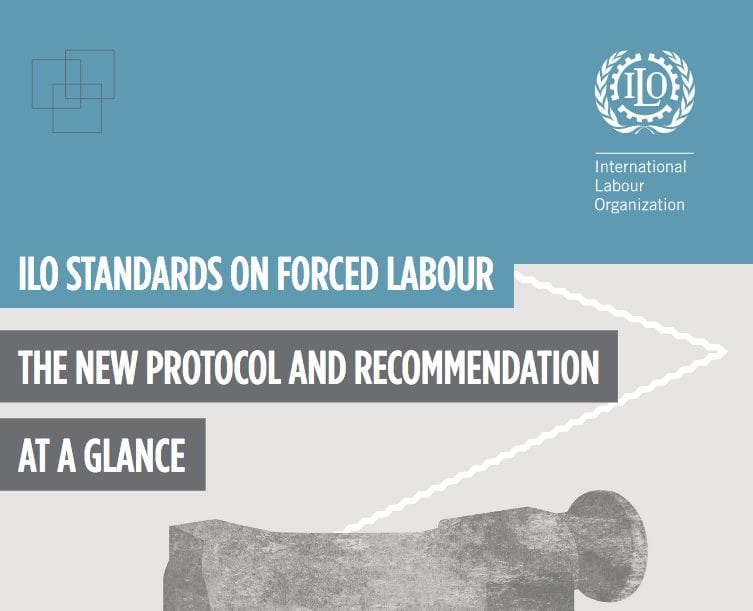
ILO Standards on Forced Labor at A Glance
At its 103rd Session in June 2014, the International Labour Conference voted overwhelmingly in favor of adopting a new Protocol to the Forced Labour Convention, 1930 (No. 29), as well as a Recommendation that supplements both the Protocol and Convention No. 29.
The Protocol and Recommendation give new impetus to the global fight against all forms of forced labor, including trafficking in persons and slavery-like practices. The instruments – also referred to as the Protocol of 2014 to the Forced Labour Convention, 1930, and the Forced Labour (Supplementary Measures) Recommendation (No. 203), 2014 – were adopted following a two-year consultative process.
The preparatory work leading to the adoption of the new instruments involved extensive research into national law and practice, as well as the comments of the supervisory bodies relating to the application of the forced labour Conventions. This work also involved consultations with and among the ILO’s tripartite constituents, as well as inputs from the United Nations partners and non-governmental organizations. Under the ILO Constitution, governments are required to submit any instrument adopted by the International Labour Conference to their national competent authorities for the enactment of relevant legislation or other action, including ratification.
The ILO has prepared this brochure in response to requests from ILO constituents for information about the new instruments and their provisions. It is intended as a reference for government officials and employers’ and workers’ representatives concerned with laws and policies on forced labor, as well as those responsible for the follow-up of ILO instruments. The brochure is also addressed to partners within the UN system, NGOs and other stakeholders interested in the new ILO instruments on forced labor and their promotion.
While this brochure focuses on the new Protocol and Recommendation, it also provides an overview of the Forced Labour Convention, 1930 (No. 29) and the Abolition of Forced Labour Convention, 1957 (No. 105)
Additional practical tools and resources can be accessed on the ILO website at:www.ilo.org/forcedlabour and www.ilo.org/normlex
read the full brochure here
